920-726-4526
There’s no simple way to describe the benefits of high-quality precision machining and its importance in today’s economy.
Just about any industry that relies on precision machined parts uses CNC machining services to create custom machined parts from raw materials, fabrications, or castings into individual components.
CNC machining, or computer numerical control machining, is a type of precision machining that’s automated, enabling high accuracy and extreme precision. Not only can CNC machining attain a degree of complexity and intricacy that traditional precision machining technology can’t, it’s also cost-effective, especially when producing complex parts.
Long gone are the days of people working levers, handling products excessively, and pushing buttons. The computer components of CNC machines manipulate the cutting tools and shape the material.
Extreme precision demands CNC machining. While conventional machining is acceptable for some industries, others require position tolerances of +/- .001” or tighter. And often, tens of thousands of identical parts are needed, which is impossible without CNC’s repeatability.
Nearly every industry benefits from CNC machining, and the types of CNC machines vary as much as the industries they benefit. Before we explore those, let’s cover what CNC machines actually do.
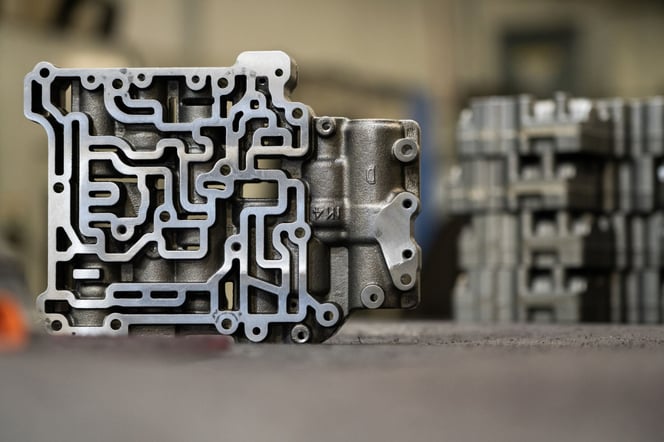
Reading about high-quality CNC machined parts and projects is fine, but there’s nothing like seeing them! Check out our CNC parts photo gallery Here.
Standard CNC machining processes may include the following machining techniques:
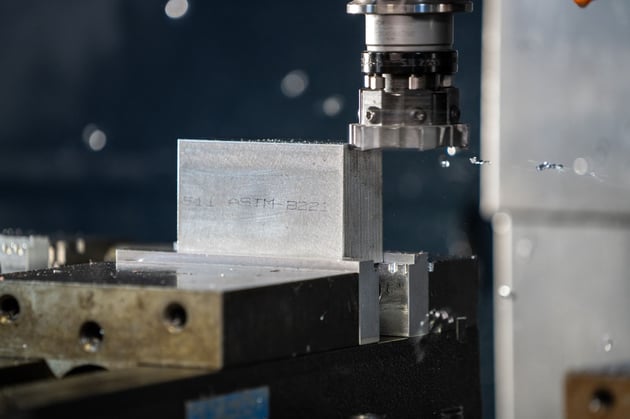
Beyond advanced machining, a CNC machine shop may provide additional services that elevate a project:
Precision machining involves removing material from a workpiece, or blank, to produce a part while maintaining tight tolerances. This is typically done by removing layers of material using milling machines, by turning, or using electrical discharge machining.
Custom CNC machine work, a type of precision machining, is automated, enabling high accuracy and extreme precision (tolerances can be in the single-digit micron range). Not only can CNC machining attain a degree of complexity and customization that traditional precision machining technology can’t, it’s also efficient and cost-effective.
It’s really no contest. Higher production quality. Reliable consistency. Customization. Superior accuracy. Increased efficiency. Reduced labor costs. It’s no wonder that CNC machine shops boast better part performance and happier workforces.
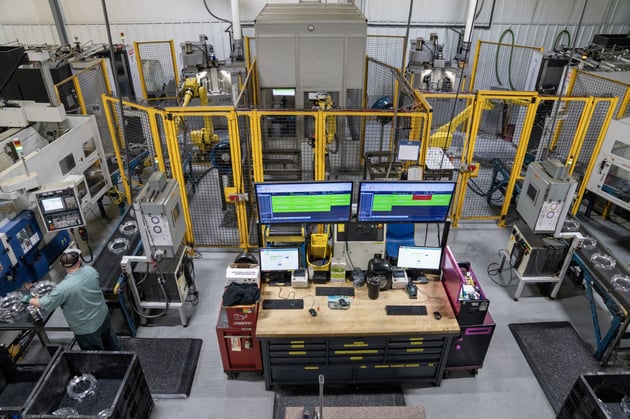
CNC machining centers are a significant investment, and machine shops leverage the industry’s best-in-class equipment and technologies to be competitive. As you’ve read, CNC machines are capable of making “precision parts.” However, when a CNC machine shop wants to make highly complex, ultra-high-precision parts, it requires advanced machinery, engineering, and proven processes to do it consistently and efficiently.
Types of CNC machines vary greatly. Most perform one or more of the services mentioned above. Typical range of motion includes 3, 4, 3+2, and full 5 axis.
There are two main spindle orientations in CNC machining. In vertical CNC machines, the spindle axis, which is called the z-axis, is oriented vertically. In a C-column configuration, the spindle travels in this direction and the table that holds the workpiece moves in both x and y horizontal directions. Vertical machines are perfect for projects milled from one side, such as covers and brackets.
In horizontal CNC machines, the spindle z-axis is horizontal and typically parallel to the length of the machine. The spindle travels the vertical y-axis and horizontally in the x-axis. The pallet and fixtures hold the workpiece and move in the z-axis, and the B-axis rotates. Horizontal machining has several advantages including accessing machining from four sides and better chip evacuation. Typically, heavy workpieces are a better fit for horizontal machines because the machines are more sturdy, include pallet changers and hold more tools and the spindle can machine all sides of the parts using B-axis rotations. As one pallet remains accessible to the operator for loading/unloading, the other operates within the work area, enabling continuous spindle-driven part cutting.
Casting can simplify the process of forming a metal into a complex shaped product. It eliminates the need for many parts to be put together; instead, molten metal is poured into a mold, and the cast is one solid piece.
In CNC manufacturing, cast metal parts most often require machining to be ready to use; they’re not ready to go straight from the mold. Many mechanical features require machining to add characteristics that casting alone cannot do. CNC machine shops work parts to ensure they meet various specifications (shape, design, accuracy, etc.).
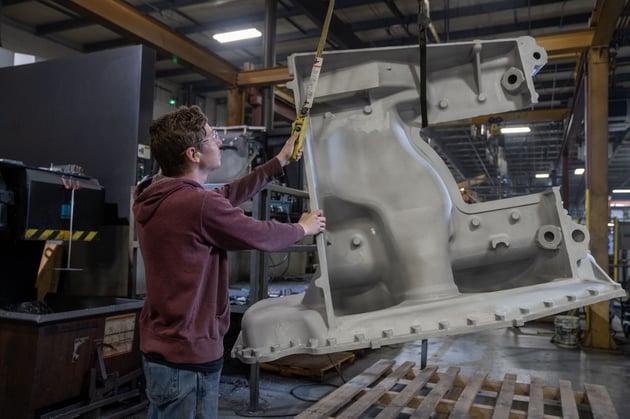
There are three methods of casting that are more common and cost-efficient than others:
Aluminum is desired for its lightweight and impressive strength. Not only does aluminum create an affordable piece price, it allows for quick cycle times and high-volume production. Early commercial aluminum castings were cookware or decorative items. Modern applications of die cast aluminum include complex shapes or thin-walled enclosures for products ranging from automobiles to sink faucets to toys. Often, less machining is needed, and the finished surface can be very smooth or textured.
A cast part is considered “complex” if it’s large (and also heavy … over 70 pounds), needs unique fixturing, has a tight tolerance, consists of a challenging material, or is difficult to control for pressure testing.
Close relationships with foundries help CNC machine shops control part costs and quality, reduce timelines, and make changes smoothly, especially prior to production when changes aren’t cost-prohibitive. Often the lowest total cost requires balancing costs of casting and machining. For example, removing cast stock may reduce machining but increase fallout from porosity.
You may have seen this stat: 80% of the cost to manufacture a product is determined in the design stage. Modern designers use design for manufacturing (DFM) guidelines to reduce costs while simplifying how a product is produced, reducing design rework, and maintaining overall quality. DFM is the merging of product design and its production method and can apply to designing parts or components.
Look for the 5 Areas of Emphasis in DFM:
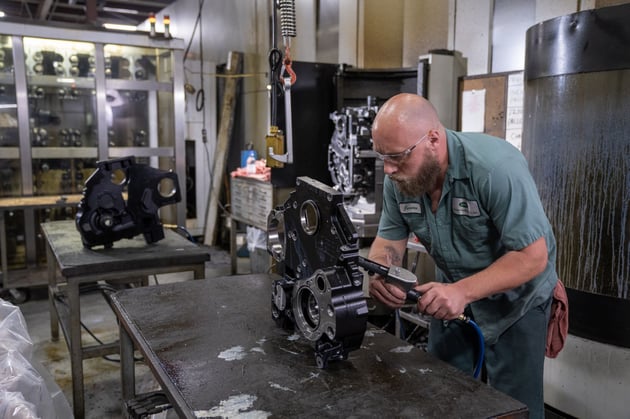
Demand These DFM Services (and enjoy their benefits):
As complex as precision CNC machining can be, customers have one simple need: a perfect part (that meets the deadline and includes superior service, of course). That one “simple need,” however, involves meeting many key performance indicators (KPIs) within a CNC machine shop.
Manufacturing KPIs help evaluate performance in order to make smart adjustments, and there could be dozens for one part alone. How do you choose which to implement?
Start by selecting KPIs that are most relevant and most powerful. Start by tracking current performance, taking note of trends. Then, push to make improvements and set goals.
Assign tasks to individuals who can complete them and report back. Goals may change over just a few weeks; so altering KPIs should become a habit. Think of KPIs as ways to make improvements, not as proof of poor performance.
Quality is the heart of CNC machining, and controlling quality is critical in identifying and correcting poor parts before they get to customers. So, of course, most CNC machine shops claim that they meet every quality requirement. But, there’s no way to know for sure, right?
Well, a quality control process called a Quality Management System (QMS) helps guarantee that products/services meet regulatory requirements — ISO 9001:2015 and IATF 16949:2016 — AND customers’ requirements.
The right QMS reminds of regular maintenance/calibration of equipment, keeps training procedures and processes on schedule, drives continuous improvement initiatives, helps select an internal audit team, as well as its ultimate goal: ensuring shipped parts are of the highest quality.
Software, such as MasterCam, helps program a part’s manufacturing by inserting a 3D computer-aided design (CAD) model into a virtual setup. Next, tool sets are added and operations are designed and simulated.
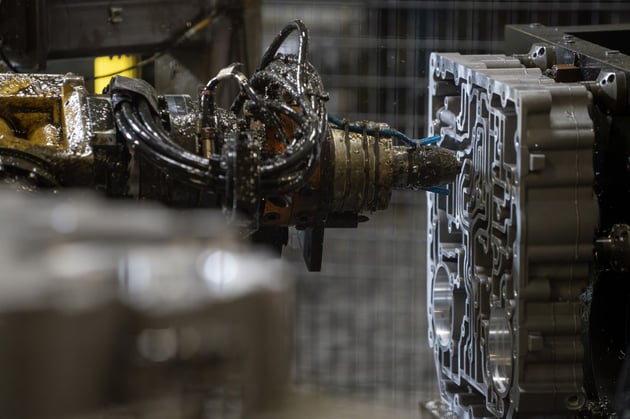
Advanced collision detection mitigates this risk as well as improves part machining thanks to the simulation. This is especially beneficial as multi-axis machining becomes more common (see below).
Tribal knowledge can be built into the CAM software, so years of experience is shared and used. Machinists can access instructions that incorporate a CNC machine’s platform, tool specifications, and best pathing, leading to less downtime and increased production.
5-axis and multi-function CNC machining centers add simultaneous control of a workpiece’s A-axis rotation in addition to its XYZ motion and B rotation. Multi-function machines integrate functions like turning and milling.
Combining operations is one benefit of more axes and multi-function machines, which means the labor cost per part is decreased. The number of operation steps (with potential for operator error) is reduced as is scrap. Eliminating re-fixturing improves accuracy.
Machines can be upgraded with interchangeable rotary tables. A 3-axis machining center converts to a 3+2-axis machine by adding tilt and rotation of the workpiece. Or, a machine can have dedicated, pre-installed rotary axes. Better CAM software inspires 5-axis machining centers by optimizing the use of guiding curves for tool pathing, which improves live-contouring material removal.
Robots work alongside humans and improve operator productivity by taking on repetitive work such as loading and unloading. Reducing human error, which also improves daily production output, complements the improvements in tooling options and fixturing also realized with robots.
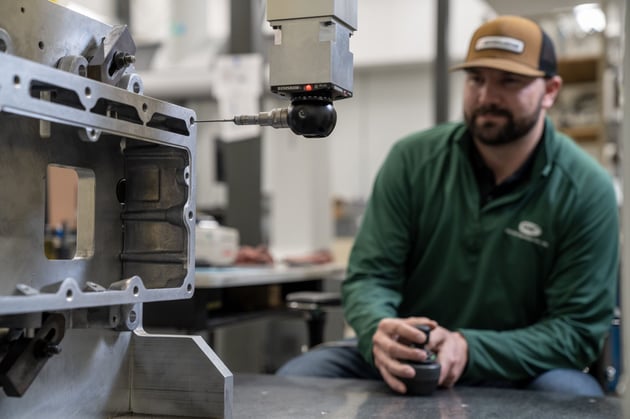
Programming robots is straightforward, meaning they’re “taught” motions and behavior as a sequence of points and functions. Operations can update robots to adjust to changes and issues without relying on engineering. Collaborative robots, or cobots, assist with simple tasks as well as within a multi-functional manufacturing environment.
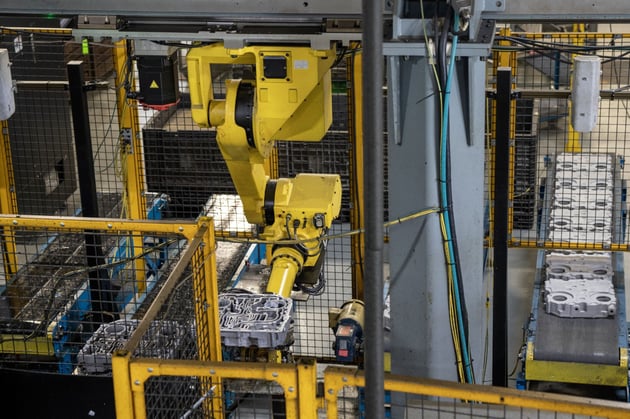
Artificial intelligence (AI) in CNC machining meets two goals: increase efficiency and productivity. AI’s strength is in analytics and real-time data, learning as it goes and providing insights. A CNC machine operator can instantly optimize a machine’s performance.
A software dashboard gathers and reports on incoming data from any number of operations within the industrial Internet of things (IIOT). Machines output data, which is used for monitoring/scheduling work and other software-augmented suggestions. One example is integrating a CNC machine with Enterprise Resource Planning (ERP) software.
Trends can be identified to help apply resources effectively to improve operations. Also, any action taken can be measured and improved upon. Preventative maintenance improves with IIOT input, too, as predictive models plan for scheduled downtime.
Many industries benefit from CNC machining including industrial equipment, aerospace, agriculture, automotive and on-highway, construction and off-highway, recreation and consumer goods, power generation, marine, and more.
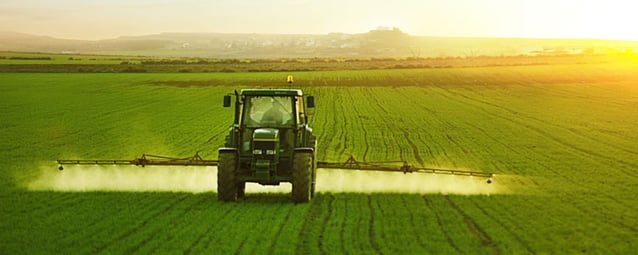
Simply put, a CNC machine operator transforms metal castings into working machined parts. Sounds easy, but it requires a unique mix of brains and hands-on attention to shape a metal casting into a part that meets exact specifications.
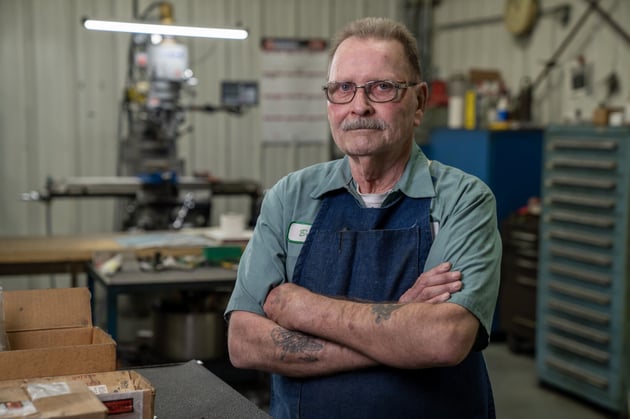
Diligence is vital for CNC machine operators because they’re constantly refocusing between different tasks: loading, unloading, deburring and inspecting parts, and changing tools. All tasks need to be completed thoroughly and quickly.
Specific responsibilities include:
Quality control needs a separate mention. An eye for detail is one of the top traits of a high-end CNC machine operator. All parts are deburred — removing sharp edges and any small metal pieces still attached to the part after machining. Parts are sampled for in-process audits.
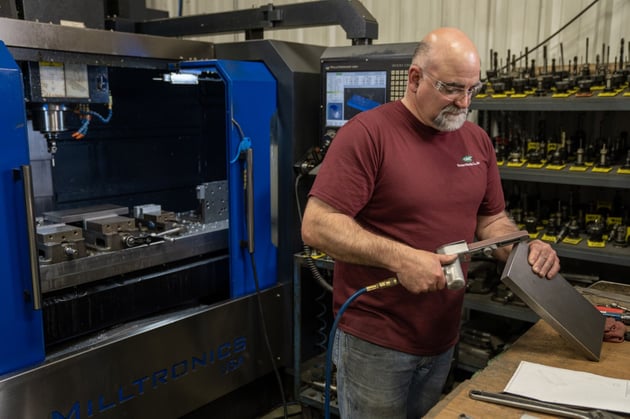
Part dimensions are checked using different measuring tools: caliper, bore gauge, pin gauge, thread gauge, depth gauge, and both ID and OD micrometers. Parts are inspected by quality assurance on a Coordinate Measuring Machine (CMM) to verify all dimensions and positions are in tolerance. An operator also listens to the machine during use, paying attention to anything that sounds different than normal and hearing the machine’s alarm for tool life being met.
Internal training for operators naturally happens within a machine shop as experienced operators pass along real-world knowledge and processes to new employees. Successful training requires a hunger to learn and diligence to properly run machines.
CNC machinists can become operators of any number of machines, from a CNC lathe to a CNC robotic cell to many others (see “Types of CNC machines” mentioned above).
External training can be gained at a local technical school or community college that offers classes in math, 3D design, blueprint reading, and specialized CNC machinist training.
The National Institute for Metalworking Skills (NIMS) offers many machining certifications within three levels, ensuring a machinist’s skills meet national standards. from entry-level programming and operating of CNC equipment to mastery of CNC milling and turning.
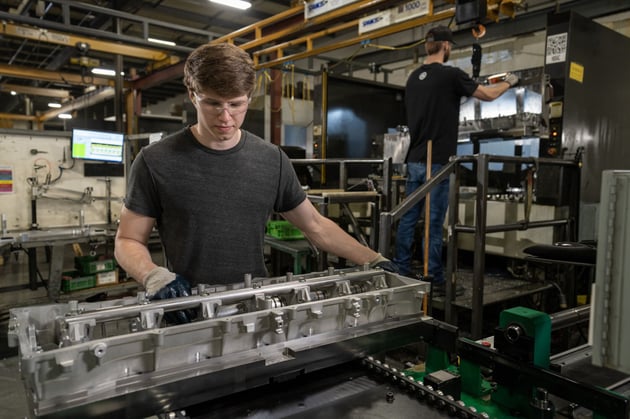
5107 County Road C
Manitowoc, WI 54220
920-726-4526